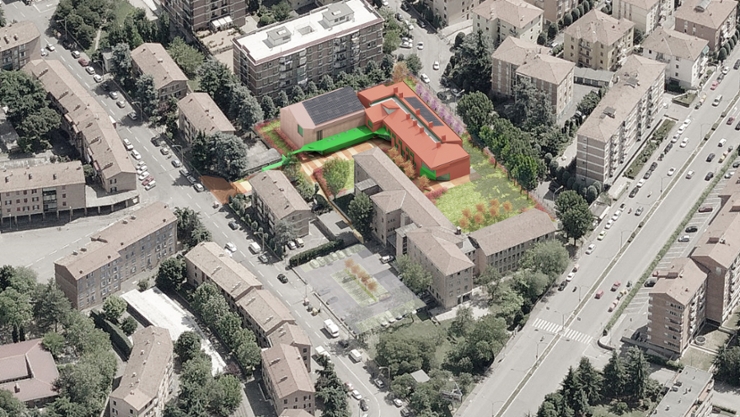One city has many needs. A single EIB loan supports a range of projects in Bologna.
From school renovations to bike paths and measures to prevent major damage from earthquakes, the loan represents the kind of sustainable development at the heart of the new Urban Agenda for the EU
High-school kids in southern Bologna will soon be able to give up their commute to overcrowded classrooms outside their neighbourhood. Via Lombardia School will be completed at the end of 2016, serving 225 children near their homes and with class sizes considerably smaller than their current conditions. The school will also be:
- built with prefabricated sections that speed up construction
- class A-plus for energy savings, with solar heating and strong insulation
- earthquake-resistant (a 2012 quake with an epicentre 36 km from Bologna killed 27 in the region)
“The children’s learning environment will be better, and this will improve their education,” says Marika Milani, head of Bologna’s Department of Urban Renewal. “They won’t have to travel far to school. They won’t be squeezed into a classroom. We’re very proud of this.”
Milani has a lot of projects to be proud of. With a EUR 50 million EIB loan, Bologna is embarking on a series of very different schemes. Underlying the whole EUR 160 million programme is the city’s plan to make itself a better place to live and a more attractive location for businesses and visitors—as well as more resilient to earthquakes and climate risks.
“We had not so much money to do all this for our beautiful city,” says Milani. “The EIB loan was truly necessary.”

- An aerial view of the Via Lombardia school
Called a framework loan because it’s used for more than a single project, this kind of EIB loan is an important tool for local governments seeking to make their communities more sustainable. Better funding of local and regional governments is key to the Urban Agenda for the EU, which is officially unveiled in Amsterdam on 30 May.
In Bologna, the EIB loan will back:
- renovation of several municipal buildings, roads, public spaces, and squares
- completion of a bike path encircling the historic city centre
- restoration of the part of Bologna’s famed medieval roadside porticos rising to the San Luca Sanctuary that overlooks the city
The porticos are candidates to be entered on the UNESCO World Heritage List. “They’re the most important symbol of Bologna in the memories of visitors,” says Milani. “But we don’t have to take all the time and trouble to make a separate deal for their restoration. All these different projects are combined into one deal with the EIB at a very good rate.”
